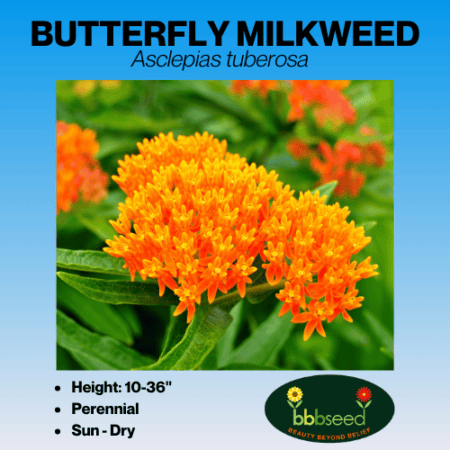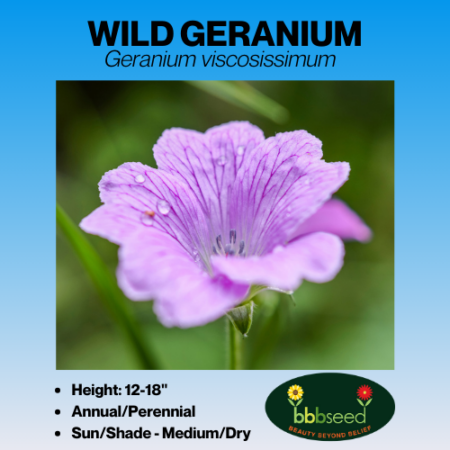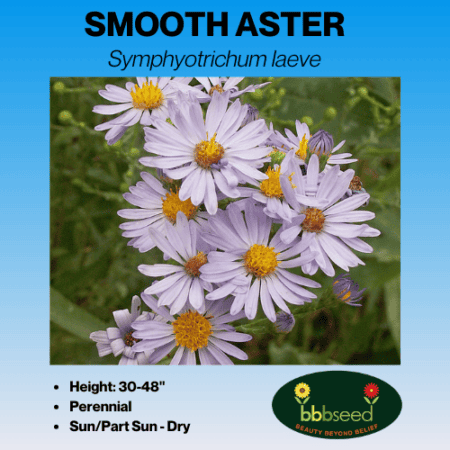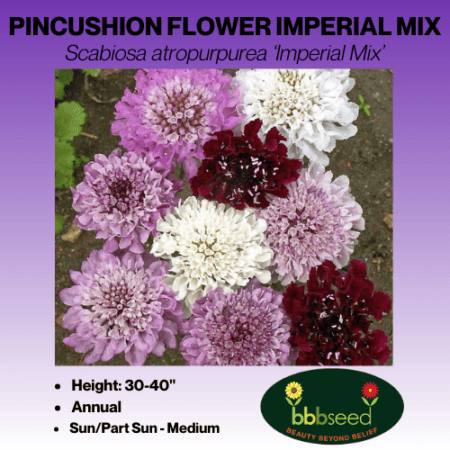Description
Butterfly Milkweed, Asclepias tuberosa
Also known as Butterflyweed, this hardy perennial, whose scientific name comes from the Greek god of medicine, is a favorite of butterflies. Unlike other milkweeds, this species does not have milky sap. This species has traditionally provided food, medicines and fiber. The clusters of flowers will range from dark orange to white on tall woody stems with smooth shiny leaves that are velvety underneath. Butterfly Milkweed will grow well in a variety of locations from prairies and open woodlands to roadsides. Butterfly Milkweed will spread through seed distribution and underground shoots.
Color: Orange
Height: 12-24″
Type: Perennial
Climate: Sun-Dry
Seeds/lb.: 70,000
Rate: 1oz./75-100 sq.ft.
Bloom time: May – July
Pkt weight: 700mg, approx. 100 seeds
WILDFLOWER SPOTLIGHT:
Butterfly Milkweed can only be pollinated by large insects, a trait common among fall wildflowers, and many depend on the survival of specific pollinators. For example; Monarch Butterflies are specific to Butterfly Milkweed and lay their eggs only on the leaves and the larvae feed on the plants. The butterfly can use nectar from other species but must return to the Milkweed to lay eggs. The plant is specifically designed to be pollinated by larger insects. The pollen of Butterfly Milkweed is contained in the pollinium, a heavy sticky structure. Only larger insects can pull the pollinium and themselves from the flowers. There are several nectaries per flower, which increases the chances of finding nectar for multiple pollinators, and multiple flowers per bloom. Note that these plants contain cardiac glycosides, chemicals that are toxic when eaten. These chemicals concentrate in the Monarch caterpillar’s flesh and make them distasteful to any would-be predators.
Some tips for planting and growing Milkweed successfully
Milkweed seed has a high percentage of dormancy, which means that many of the seeds in your packet won’t germinate without special treatment or will germinate, not this season, but maybe the next season. So here are some suggestions.
-Prep:
Milkweed seeds need to be exposed to cold temperatures that normally occur in winter to help break the natural dormancy and help soften the hard outer casing. If you plan to start your Milkweeds indoors, you will need to do this cold stratification, yourself. You can do this by putting your Milkweed seed in a damp paper towel, folding it to fit into a sealed plastic bag, and then placing the bag into the refrigerator. Keep it there for 4-6 weeks.
Other methods: Nick seeds with a sharp razor blade. Soak seeds in hot (190 deg. F, to start) water for 12 hours before planting. (not as successful)
– Planting:
Plant in small 2-4″ peat pots (recommended) or tall plastic pots. Use ‘seed-starting’ soil or medium. Moisten the soil, place 1-2 seeds into each pot and cover with no more than 1/6″ damp soil or medium. Place the pots where they can drain. Water gently or fill a tray with 1/2 ” water to be absorbed from the bottom of the peat pots. Dump the excess water after absorption. Water when the top of the soil is dry and don’t overwater. Milkweed seeds germinate in warm conditions, so place a tray of pots in a warm sunny window, greenhouse, or under a grow light. Germination in 10-15 days for cold-stratified seeds. To encourage sturdy stems, place your grow light bulb close to the soil. Sometimes a small fan blowing gently towards the new seedlings will encourage sturdier stems.
– Other planting methods:
Plant non-stratified seed into peat pots filled with seed-starting soil or medium. Moisten, and place in a greenhouse or under grow light. This germination might take several months. If planting outside, seed in late fall. Let the Milkweed seed remain over the winter. This will accomplish the cold-stratification, needed. Germination should occur when the soil warms and the days are longer.
-Transplanting:
When plants reach 2-3″ tall, transplant them outdoors in full sun in early spring after the danger of frost is past. Milkweed produces a long taproot, so take care to not disturb the roots. Plant peat pots so that the top edge of the small pot is underground to avoid drying out. If your Milkweed seedlings were planted in plastic pots, take extra care to not disturb the roots. Water after planting until plants are established. Then tapering off, unless the season is extremely dry. The newly planted Milkweed seedlings may lose all their leaves due to transplant shock but they should grow them back again.









Reviews
There are no reviews yet.